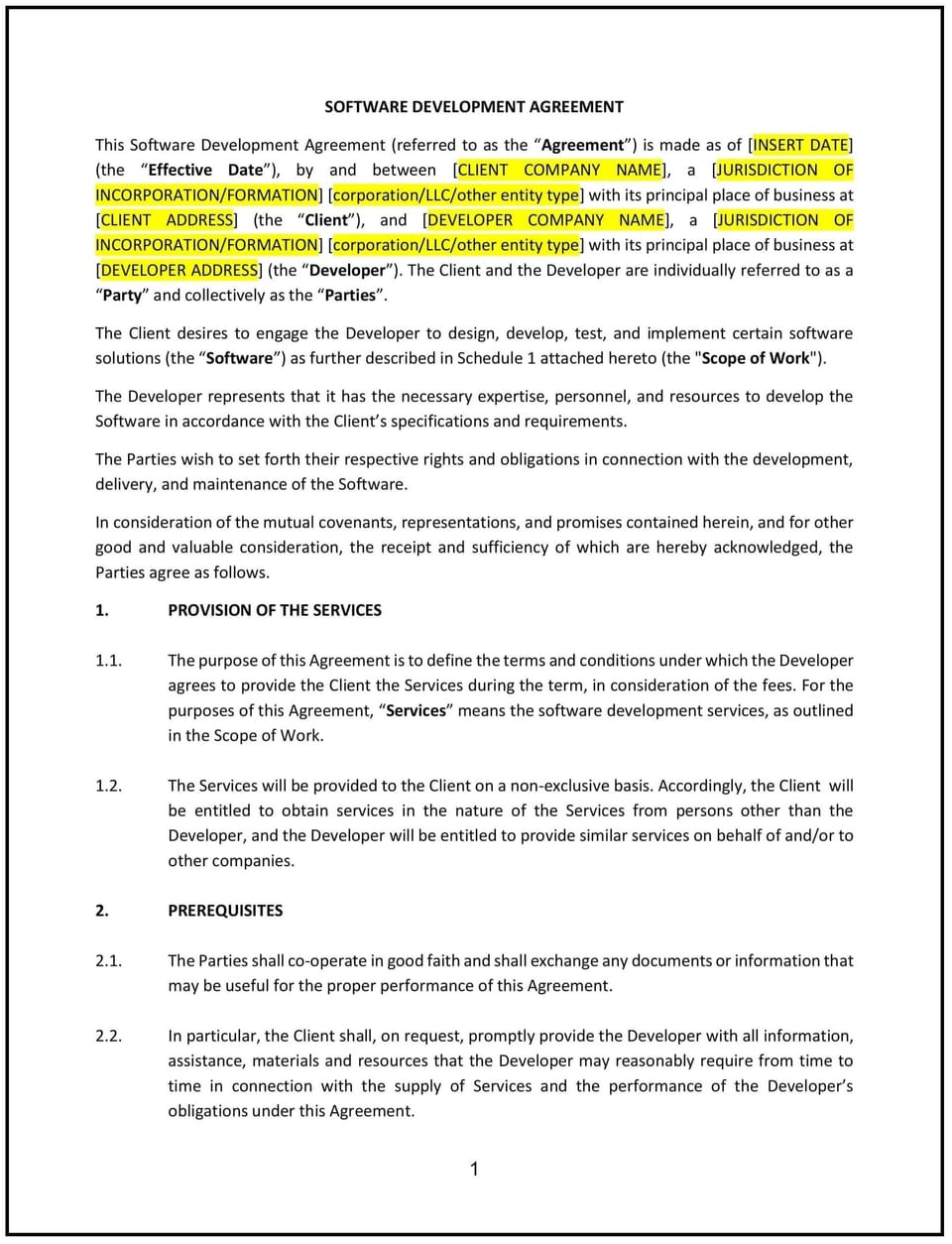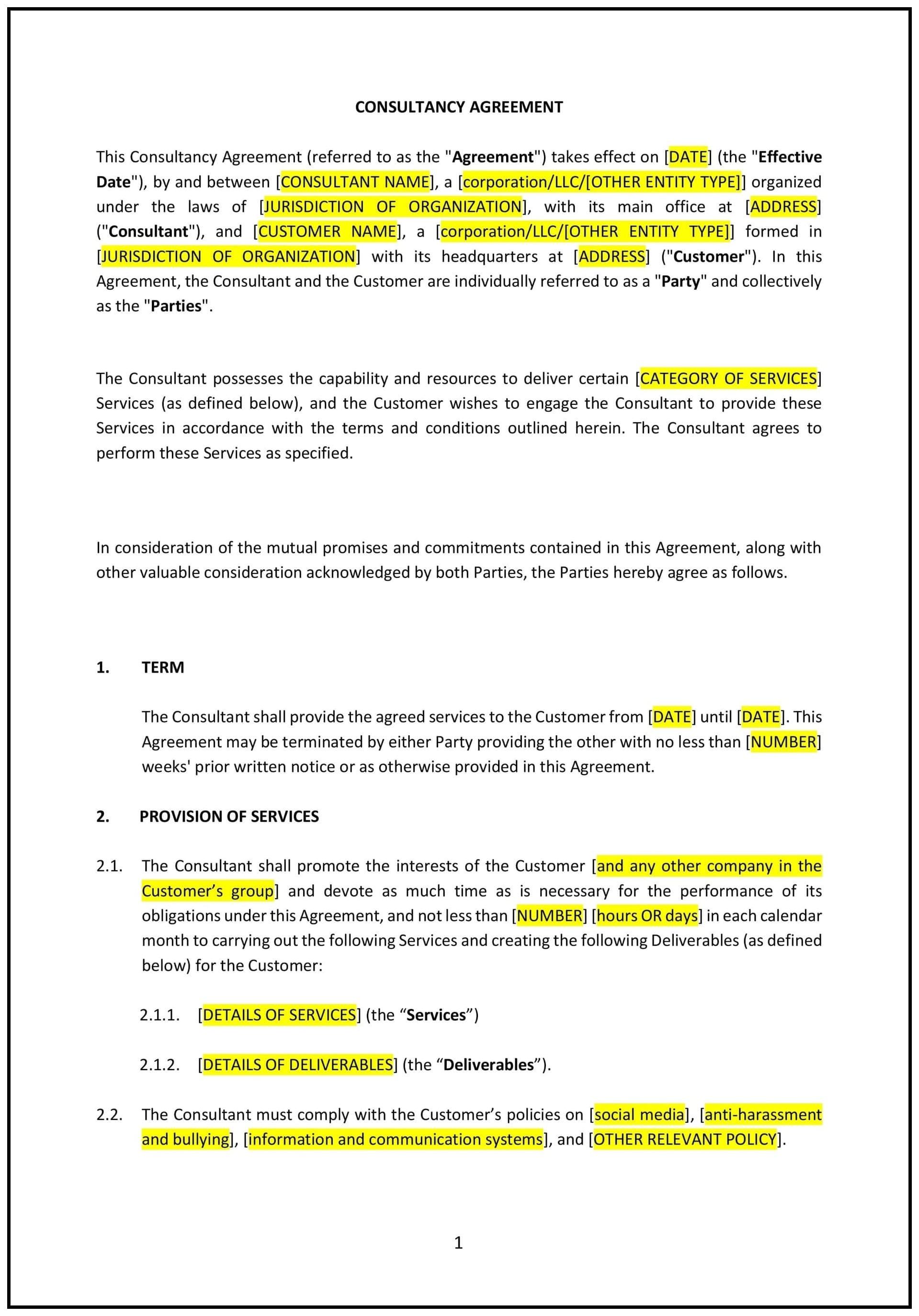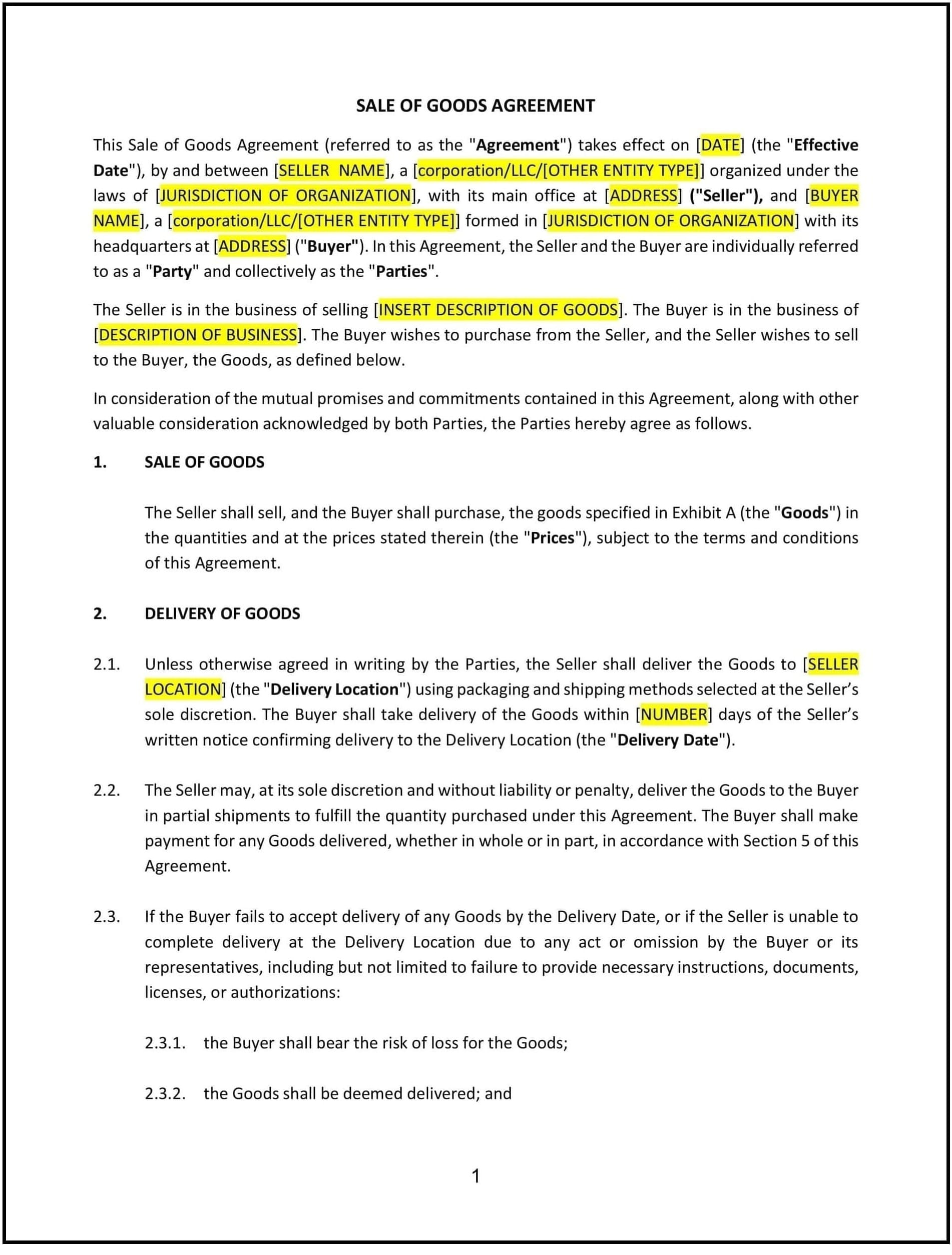Software Development Agreement (Alaska): Free template

Software Development Agreement (Alaska)
A Software Development Agreement is a legally binding contract between a client and a software developer (or development company) that outlines the terms and conditions under which software will be designed, developed, tested, and delivered. In Alaska, these agreements are commonly used in industries such as technology, healthcare, finance, and e-commerce to ensure clarity on project scope, timelines, payment terms, intellectual property rights, and other critical aspects.
For instance, an Anchorage-based tech startup might use a Software Development Agreement to formalize its collaboration with a Fairbanks-based software development firm to create a custom AI-driven platform for tracking logistics in remote areas. A well-drafted agreement minimizes risks, ensures accountability, and aligns with Alaska’s legal framework.
Tips for drafting and maintaining a Software Development Agreement in Alaska
- Define the scope of work: Clearly outline the software’s purpose, features, functionality, and deliverables. Include milestones and deadlines to track progress.
- Example: “Party A agrees to develop a custom logistics tracking platform (the ‘Software’) for Party B. The project will include GPS integration, real-time data analytics, and user dashboards. Deliverables are due in three phases over six months.”
- Specify ownership and licensing rights: Clarify who owns the software and any related intellectual property. Include details about whether the license is exclusive, non-exclusive, transferable, or time-bound.
- Example: “Party A retains ownership of all pre-existing intellectual property used in the Software. Party B is granted an exclusive, perpetual license to use the Software for its business operations in Alaska.”
- Outline payment terms: Detail how the developer will be compensated, including fixed fees, milestone payments, or hourly rates. Include payment schedules, invoicing procedures, late payment penalties, and any additional costs.
- Example: “Party B agrees to pay Party A $75,000 for the development of the Software, payable in three installments tied to project milestones. Payments will be made within 15 days of receiving an invoice.”
- Address acceptance criteria and testing: Specify the process for testing and approving deliverables. Include provisions for revisions and bug fixes during the warranty period.
- Example: “Party B will have 10 business days to test each deliverable and provide feedback. Party A will address any defects identified during this period at no additional cost.”
- Establish confidentiality and data security: Protect sensitive information shared during the project by including confidentiality clauses that align with Alaska’s trade secret and privacy laws. Address data security measures to safeguard proprietary data.
- Example: “Both parties agree to maintain the confidentiality of all proprietary information disclosed during the term of this agreement and for a period of five years thereafter. Each party will implement industry-standard encryption and access controls to protect shared data.”
- Set termination provisions: Define the circumstances under which the agreement can be terminated, such as breach of terms, mutual consent, or project abandonment. Include steps for transitioning responsibilities if the agreement ends.
- Example: “Either party may terminate this agreement with 30 days’ written notice if the other party fails to comply with the terms outlined herein. Upon termination, Party A will deliver all completed work to Party B.”
- Include dispute resolution mechanisms: Specify how disputes will be resolved, whether through negotiation, mediation, arbitration, or litigation. Include jurisdiction and governing law clauses to streamline the process.
- Example: “Any disputes arising under this agreement shall be resolved through binding arbitration in accordance with the rules of the American Arbitration Association. The arbitration will take place in Anchorage, Alaska, and the decision will be final and binding.”
- Align with Alaska-specific laws: Ensure the agreement adheres to Alaska’s contract laws, including the Alaska Uniform Commercial Code (UCC) for transactions involving goods. Additionally, address alignment with consumer protection statutes and intellectual property regulations.
- Example: “This agreement shall be governed by and construed in accordance with the laws of the State of Alaska. Both parties agree to adhere to all applicable state and federal laws, including intellectual property and consumer protection regulations.”
- Specify warranties and disclaimers: Include any warranties provided by the developer, such as performance guarantees, as well as disclaimers for issues outside their control.
- Example: “Party A warrants that the Software will perform substantially in accordance with the specifications provided. However, Party A disclaims any liability for damages caused by third-party integrations, hardware failures, or acts of nature.”
- Address post-delivery support and maintenance: Define the level of support the developer will provide after the software is delivered, including bug fixes, updates, and technical assistance.
- Example: “Party A will provide 90 days of post-delivery support, including bug fixes and minor enhancements. Additional support services may be purchased at an hourly rate of $200.”
Frequently asked questions (FAQs)
Q: Can a Software Development Agreement include clauses specific to Alaska’s remote or harsh environments?
A: Yes, Software Development Agreements in Alaska can include industry-specific clauses, especially if the software relates to logistics, transportation, or resource management in remote areas. For example, a Juneau-based developer might create software tailored to managing supply chains in Alaska’s rural regions.
Q: What happens if the developer misses a deadline in a Software Development Agreement?
A: If the developer misses a deadline, the agreement should specify remedies such as penalty clauses, extensions, or termination rights. Including clear deadlines and consequences helps manage expectations and prevent disputes.
Q: Are there unique tax considerations for Software Development Agreements in Alaska?
A: Revenue generated from Software Development Agreements may be subject to Alaska’s state income tax and sales tax, depending on the nature of the transaction. Consulting a tax professional ensures compliance with all applicable tax laws.
Q: How long does a Software Development Agreement typically last in Alaska?
A: The duration of a Software Development Agreement depends on the project’s complexity and scope. It could range from a few months for small projects to several years for large-scale, multi-phase developments.
Q: Can a Software Development Agreement include international collaboration?
A: Yes, a Software Development Agreement can include international collaboration, but it should clearly specify the roles, responsibilities, and legal jurisdictions of all parties. Parties must also consider international intellectual property laws when drafting such agreements.
This article contains general legal information and does not contain legal advice. Cobrief is not a law firm or a substitute for an attorney or law firm. The law is complex and changes often. For legal advice, please ask a lawyer.


